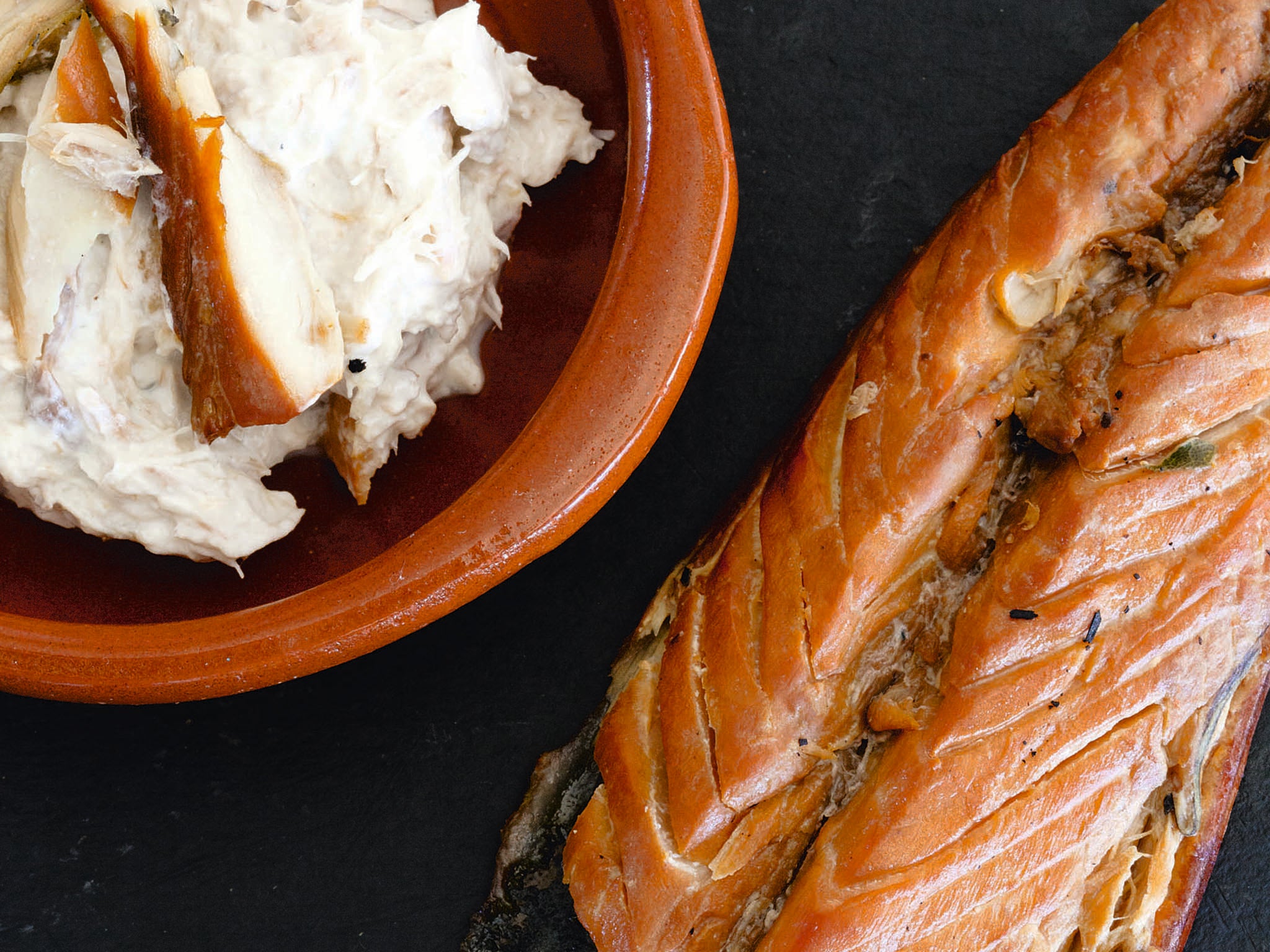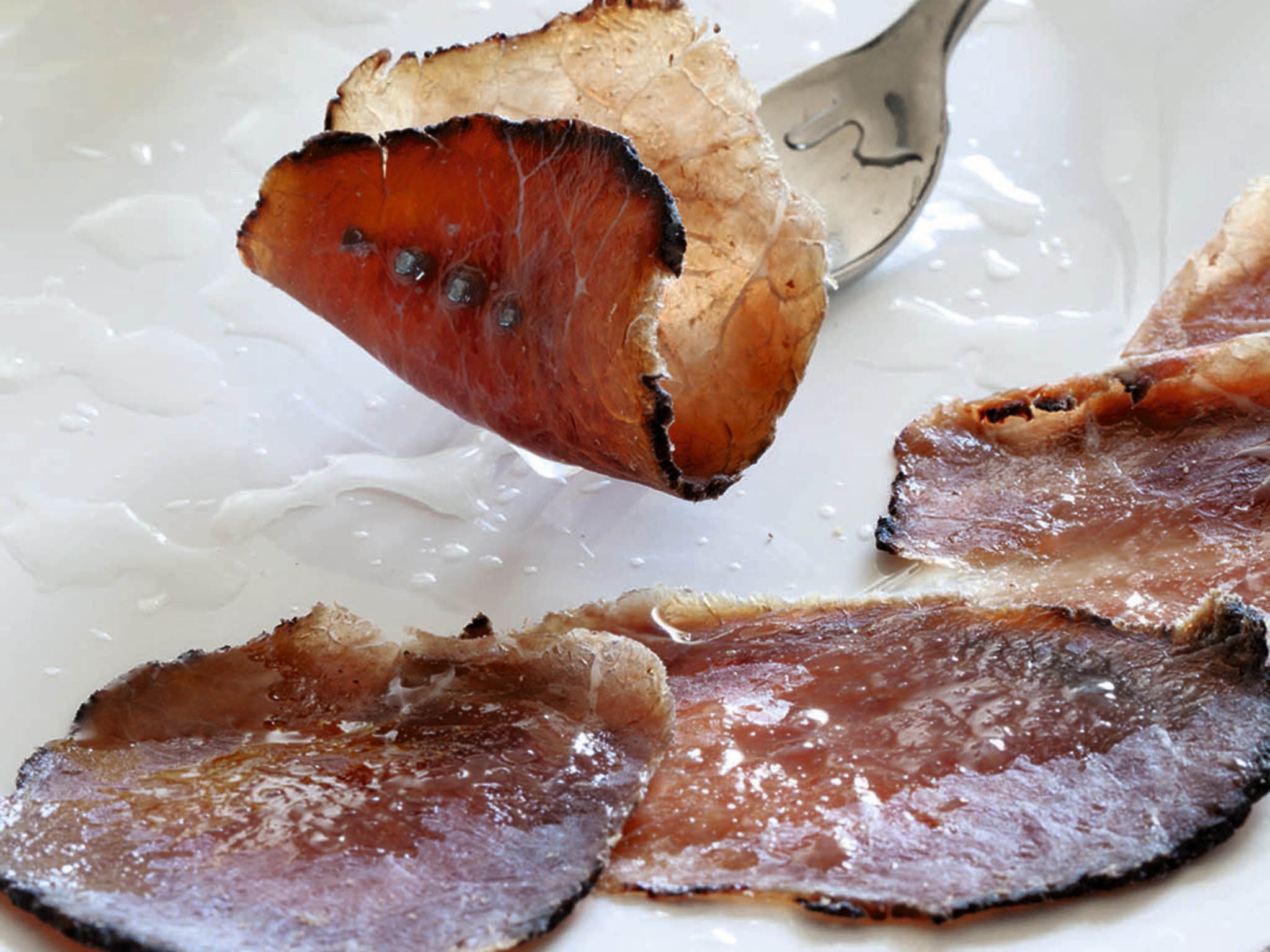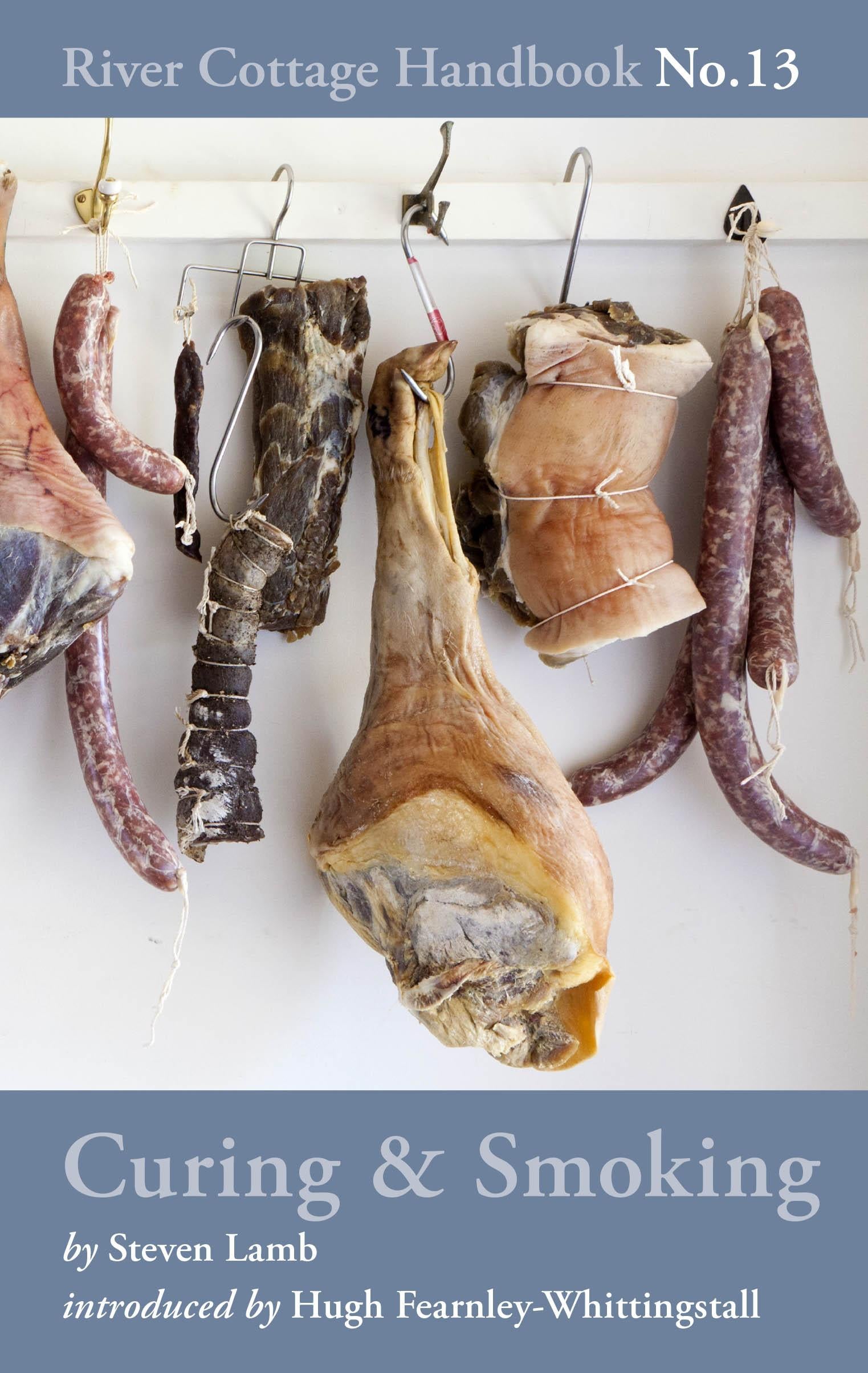Two smoked meat recipes from River Cottage's Steve Lamb
Using a hot smoker at home is very easy, as is air drying meat. Here, Steven Lamb shares recipes for both

Hot-smoked mackerel
Techniques used: Dry-curing, hot-smoking
Curing and smoking time: 16 minutes
I am fortunate to live and work within casting distance of Lyme Bay. When the mackerel are running, we clock off work with our fishing rods in hand and head off down to the shoreline. Our first job is to set a small driftwood fire going on the pebbled beach and then it is time to tie feathers and a small ledger on the end of our lines, cast them out into the rushing waves and spin them back to shore. It’s a wonderful place to be if you don’t catch a fish – and even better if you do.
Hot-smoking mackerel fillets fresh from the sea is one of my favourite things to do. Lightly salted and cooked over oak sawdust, these are fantastic. They can also be used to make a tasty pâté – a great way to deal with a glut of shimmering fish.
Serves 4
4 mackerel, filleted and pin-boned
For the cure
A generous pinch of sea salt per fillet 30g dill, finely chopped (optional)
For smoking: Oak wood chips
Equipment: Kitchen tweezers and hot smoker
Check the mackerel fillets for pin bones and remove with tweezers. Add a pinch of the cure to the flesh side of each mackerel fillet (or just splash with sea water). After 8 minutes wash off the cure (with sea water if you’re on the beach) and pat dry. If you’ve used sea water to start with, just pat the fish dry.
Prepare the hot smoker with the oak wood chips, place on the fire or other heat source and smoke the mackerel fillets for 8 minutes. Eat immediately.
Hot-smoked mackerel pâté
Skin 250g hot-smoked mackerel fillet and put half in a food processor with 2 tsp freshly grated horseradish, 1 tbsp crème fraîche, 1 tsp caster sugar and 1 tbsp lemon juice. Blend until smooth, then transfer to a bowl. Flake the remaining fish and stir through the pâté with 1 tsp coarsely ground black pepper and a handful of dill or chives, finely chopped. Taste for seasoning and add more lemon juice, if necessary. Serve the pâté on buttered rye bread.

Bresaola
Techniques used: Dry-curing, wet-curing, air-drying
Curing time: minimum 19 days
This recipe is adapted from The River Cottage Meat Book and is a truly wonderful way to deal with a joint of beef that, to my mind, is all too often turned into an inferior roast. Beef that has been through this magical, aromatic, boozy baptism turns a deep purple on the outside, and thin slices of it – arranged on a platter and finished with a drizzle of olive oil – look like beautiful stained-glass windows.
The method starts off with a dredging of dry cure and then a good drenching in a cold red wine bath before air-drying.
Serves about 30 (a few slices each)
A joint of beef topside or silverside, about 4kg
For the cure
About 120g coarse sea salt (i.e. 3% of the weight of the beef )
12 sprigs of rosemary 12 bay leaves, torn 20 cloves
4 garlic cloves, peeled and crushed 1 tbsp black peppercorns,
freshly cracked
2 tsp dried chilli flakes
5–6 strips of finely pared orange zest 5–6 strips of finely pared lemon zest 75cl bottle of red wine
Equipment: Food-standard container Butcher’s hooks and string
Trim the outside of the meat, removing any fat or sinews. Mix together all the dry ingredients for the cure and place in a food-standard container into which the joint will fit quite snugly. Add the meat, turning it to coat well. This way of applying the cure mix is often called ‘dredging’. Cover and leave in a cool place – the fridge if you like – for 4 days, turning the meat every other day.
Pour over the bottle of wine, or at least enough wine to virtually cover the meat, and return to the fridge. Turn the meat once a day for 5 days, then remove it from the marinade and pat dry with a clean tea towel (though not one that carries any sentimental value as it will get badly stained).

Tie up the meat with string, using the butcher’s knot (see pp.148–9), and hang it in a dry, cool and draughty place such as an outbuilding, covered porch or poorly made shed (see p.103) – or put it in the fridge – for at least 10 days, but closer to 3 weeks for a more traditional finish.
When ready, it should be fairly hard to the touch on the surface but the centre will be silky smooth and slightly giving. The bresaola might need to be trimmed of the hard discoloured exterior before slicing, especially if it has hung for a longer period. Slice it very thinly, across the grain of the meat, like a giant salami.
A finished bresaola can be hung in a cool place for up to a month and used as and when you need it. In warm or humid weather, transfer it to the fridge.
Extracted from 'Curing & Smoking: River Cottage Handbook' by Steven Lamb. Published by Bloomsbury (£14.99)
Join our commenting forum
Join thought-provoking conversations, follow other Independent readers and see their replies
Comments
Bookmark popover
Removed from bookmarks